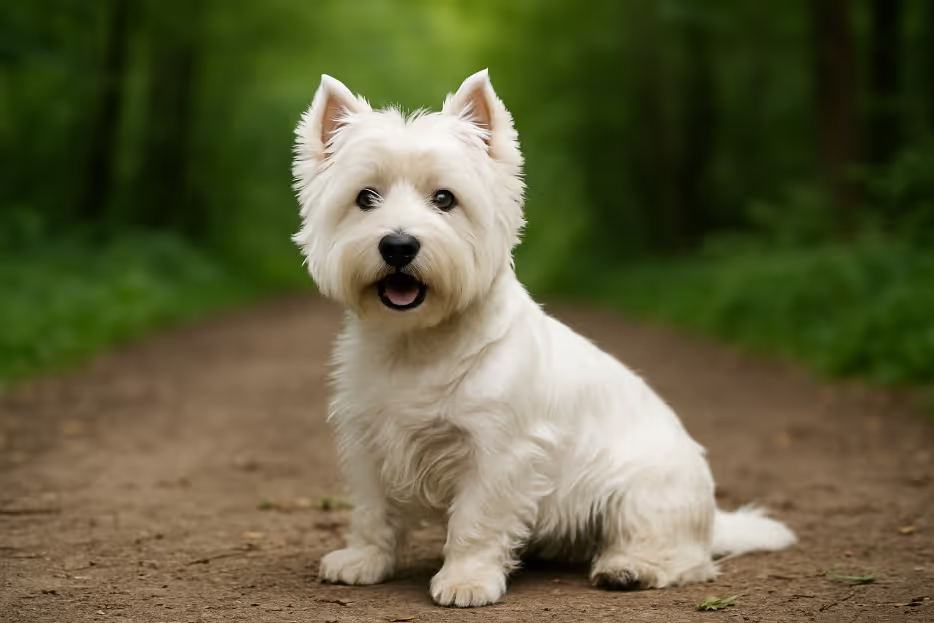The West Highland White Terrier, affectionately known as the “Westie,” is a cheerful, confident, and affectionate small terrier with a bright white coat and a personality as bold as it is charming. Bred in Scotland to hunt small game, the Westie is spirited, intelligent, and adaptable—making it a favorite companion for families, singles, and seniors alike. Known for their playful nature and loyalty, Westies thrive in homes that provide daily activity, mental stimulation, and plenty of companionship.

The West Highland White Terrier originated in Scotland and shares ancestry with other Scottish terriers such as the Cairn Terrier and Scottish Terrier. Bred for hunting foxes, badgers, and other small game, the Westie’s distinctive white coat made them easily visible in the field. Colonel Edward Donald Malcolm of Poltalloch is credited with refining the breed in the late 1800s after selecting only white-coated dogs for breeding. Recognized by the Kennel Club (UK) in 1907 and the American Kennel Club in 1908, the Westie has since become one of the world’s most beloved small terriers.
A small, sturdy terrier with a bright white coat and alert expression.
Westies require regular grooming to maintain their crisp coat and neat appearance.
Active and curious, Westies need daily exercise to stay happy and healthy.
Smart and eager to learn, but with a touch of terrier stubbornness.
A balanced diet supports their energy and coat health.
Generally healthy but prone to certain breed-specific issues.
Westies are widely available through breeders and rescues.
Are Westies good family dogs?
Yes, they are affectionate, playful, and generally good with respectful children.
Do Westies bark a lot?
They can be vocal watchdogs but respond well to training.
Do Westies shed?
Yes, but minimally compared to many other breeds.
Are Westies easy to train?
Yes, they are intelligent but require consistent guidance.
Do they get along with other pets?
Generally yes, though they may chase smaller animals due to prey drive.
Are they hypoallergenic?
No, but their low-shedding coat may be more manageable for allergy sufferers.
How much grooming do they need?
Regular brushing and occasional hand-stripping are essential.